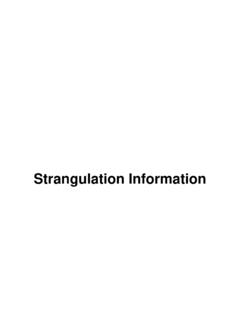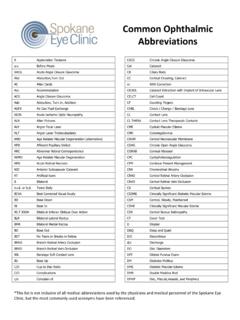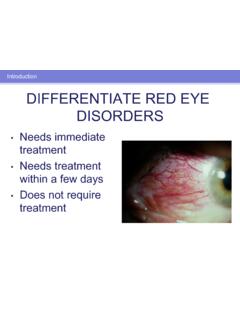Transcription of CEN Sample Questions
1 CEN Sample Questions The following 10 Sample Questions are presented to demonstrate the format used on the CEN exam and how Questions reflect the nursing process. These Sample items are not intended to reflect the difficulty of the actual Questions on the CEN exam. The preferred response is indicated in boldface type. 1. Results of a lumbar puncture reveal a white blood cell count of 15,000 cells/ L and positive for increased protein and decreased glucose. The nurse should anticipate implementing which of the following precautions? A. negative pressure B. droplet C. neutropenic D. contact 2. A patient who presents with blunt trauma to the upper abdomen reports sharp, boring abdominal pain with radiation to the back.
2 Assessment reveals a firm abdomen, 4+ pitting edema in the lower extremities, and hypotension. Results of laboratory studies reveal hypocalcemia. The nurse should suspect trauma to the A. pancreas. B. spleen. C. gallbladder. D. liver. 3. A woman with a history of pelvic inflammatory disease presents with a fever, abdominal pain, and vaginal discharge. She states that her last menses was 8 weeks ago. The most appropriate diagnostic procedure is A. pelvic ultrasound B. pregnancy screening. C. vaginal cultures. D. abdominal CT with contrast. 4. A patient presents with injuries to the face and eyes after a bottle of crystal drain cleaner and water explodes in his face. Irrigation with normal saline solution should be performed A.
3 Until the pH in the eye is B. after visual acuity is assessed. C. for a minimum of 30 minutes. D. with a maximum of 500 mL of solution used. 5. A patient presents with a foreign body sensation in the left eye after exposure to an ultraviolet lamp in a suntan bed. Assessment reveals photophobia, tearing, and sharp, stabbing pain. The nurse suspects A. conjunctivitis. B. corneal abrasion. C. chemical burn to the eye. D. subconjunctival hemorrhage . 6. A patient with deep vein thrombosis is being discharged home. Which of the following statements by the patient indicates that further teaching is necessary? A. I will elevate my leg on a pillow B. I will use cool, dry compresses on my leg.
4 C. I will try to stay in bed to avoid complications. D. I will take my warfarin (Coumadin) as prescribed. 7. A patient has feelings of being overwhelmed and inability to cope. During triage, the nurse should focus on assessing the patient s A. problem. B. support system. C. usual coping mechanisms. D. potential for self-directed violence. 8. The most appropriate course of action for a 2-year-old patient with a partial airway obstruction is to A. initiate cardiac compressions. B. prepare for immediate cricothyrotomy. C. perform a blind finger sweep. D. deliver abdominal thrusts. 9. A 36-year-old construction worker is stupors, has a rectal temperature of F ( C), and has hot, dry skin.
5 The nurse anticipates administering A. oral hypotonic fluids. B. IV fluid resuscitation. C. IV sodium bicarbonate. D. acetaminophen. 10. Characteristics of an effective quality improvement program include A. using clinical indicators reflecting high-risk care activities. B. setting thresholds of 75% compliance on monitored items. C. changing clinical indicators on a monthly basis. D. separating medical and nursing issues.








